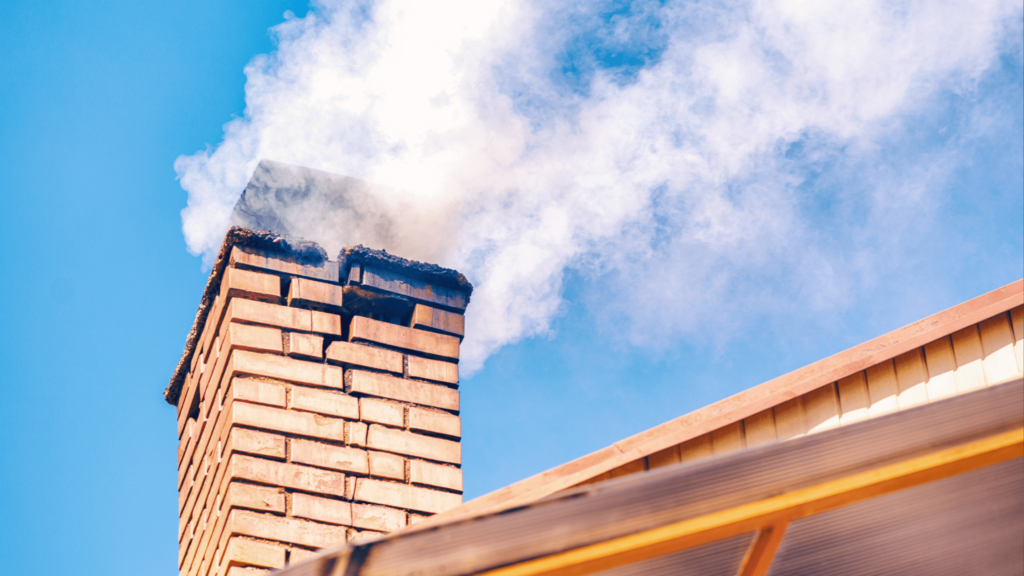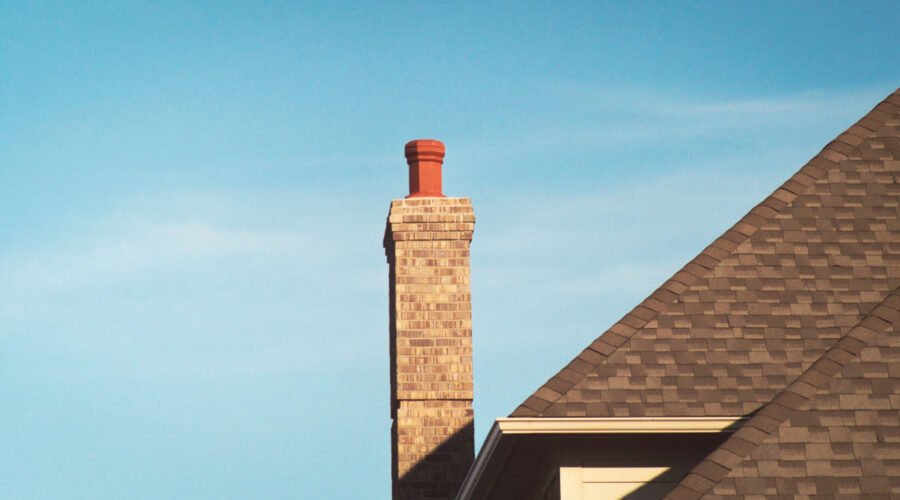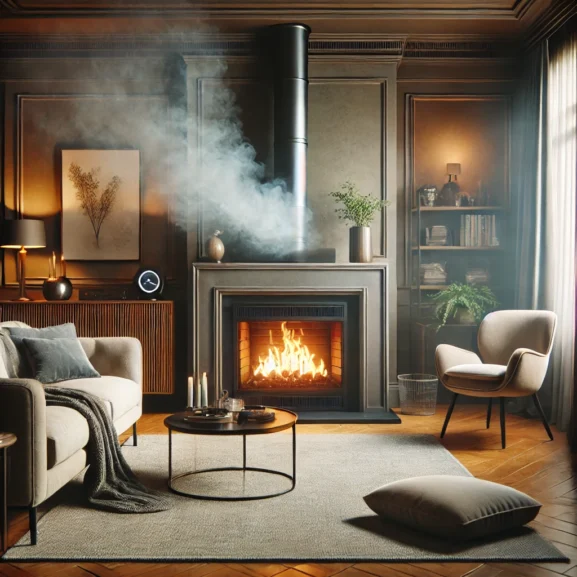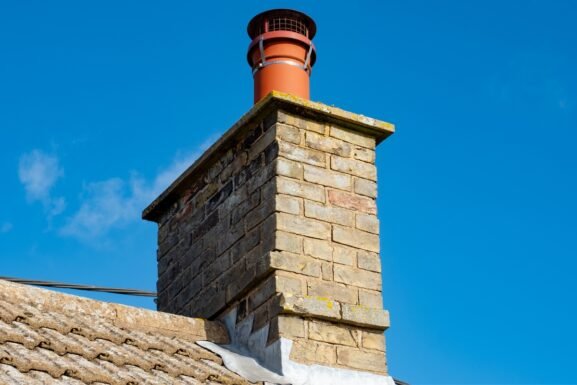Solving Draft Issues in Tightly Insulated Modern Homes for Cozy Living
In our quest for energy efficiency, tightly insulated modern homes have become the norm. While these homes excel at keeping the weather out, they sometimes struggle with an unexpected problem—drafts. It seems counterintuitive that a home designed to be airtight could still let in cold air, but it’s a reality many homeowners face.
Draft issues in these well-sealed homes can stem from various sources. Even the smallest gaps around windows, doors, or ventilation systems can disrupt the comfort we expect from our living spaces. As we explore this topic, we’ll uncover why drafts occur and what steps we can take to mitigate them, ensuring our homes remain the cozy sanctuaries we desire. By understanding these issues, we can make informed decisions to enhance both comfort and energy efficiency.
Home Insulation 101: Key Concepts for Energy-Efficient Living

In our pursuit of energy efficiency, understanding home insulation is vital. Insulated homes are designed to shutter drafts and keep indoor air temperatures consistent. But, airflow restrictions can sometimes lead to unintended draft problems. To maintain an energy-efficient home, here’s what we should focus on:
- Seal Gaps: Modern construction often leaves minor gaps around windows and doors. These tiny openings can disrupt heat retention, making our homes less cozy. Regular inspections help identify and seal these potential offenders.
- Ventilation Systems: While insulation keeps our homes warm, proper ventilation prevents it from becoming a stuffy fortress. Ensure ventilation systems operate efficiently to maintain indoor air quality. Fun fact: nobody likes feeling like a wilted lettuce in a hot, stagnant room!
- Draft Tests: Checking for drafts isn’t just blowing air up one’s nose! Using draft tests helps us pinpoint areas that compromise our home’s energy efficiency. It’s practical and maybe, just maybe, gives us an excuse to play detective.
- Chimney Design Considerations: In areas where winter temperatures can plummet, chimney maintenance is crucial. Poor chimney design might lead to unexpected drafts. Consulting experts like us help avoid problems down the line. For chimney safety standards, you might want to visit the National Fire Protection Association.
For a home consultation or any chimney maintenance needs, A close-up view of a chimney with visible rust and weathering, showing signs of deterioration and wear. The chimney cap appears worn, with corrosion marks, and there is visible discoloration along the pipe. The sky in the background is overcast, emphasizing the structure’s age and exposure to the elements. ensure your home remains cozy and efficient, minus the unwanted draft guests.
Common Causes of Drafts
Draft problems in insulated homes can turn your cozy haven into a chilly cave. Modern construction often tries to seal every nook and cranny, but drafts sneak in anyway, leaving us puzzled about the culprit.
Poor Installation Techniques
Improper installation remains a sneaky source of drafts in modern homes. Contractors sometimes cut corners or rush jobs. For example, misaligned window frames create gaps that let cold air in. Ventilation systems also play a key role. If they’re not installed correctly, airflow restrictions might arise, disrupting heat retention. We’ve seen numerous cases of insulation failures due to sloppy workmanship. These lapses can affect energy efficiency and indoor air quality, leaving homeowners frustrated.
Material Degradation Over Time
Time itself, the crafty trickster, gradually wears down even the most robust materials. Weathering leads to gaps, letting in unwelcome drafts. Over several years, seals around doors and windows can degrade. In humid summers and frosty winters, this wear becomes pronounced. Materials shift, crack, or rot, creating draft issues. Regular maintenance checks are essential.
Identifying Draft Issues
Even with modern construction, draft problems persist in insulated homes. Let’s uncover how to spot these sneaky intrusions.
Signs of Draft Problems
Drafts aren’t invisible ninjas; they leave clues:
- Chilly Zones: Certain spots may feel like you’re in the North Pole. This could indicate drafts.
- Swaying Curtains: If your curtains sway when windows are shut, drafts might be playing ghost.
- Higher Energy Bills: Spikes in energy costs can signal that your heating system is fighting against drafts.
- Dryer than Desert: Cold air doesn’t hold moisture well; dry indoor air quality suggests drafts.
Feeling like Sherlock Holmes? reach out to certified professionals if you need backup in finding drafts.
Tools for Detecting Drafts
Detecting drafts requires some spy gear:
- Smoke Pencil: This tool releases a thin trail of smoke, revealing airflow restrictions. It’s as cool as it sounds!
- Infrared Thermometer: Detects temperature differences, perfect for spotting chilly spots.
- Thermal Camera: Offers visual proof of drafts; high-tech wizardry at your fingertips.
These gadgets will have you feeling like a tech-savvy detective!
Dreading the hunt for drafts? reach out to certified professionals tailored to unique climate challenges.

Solutions to Draft Issues
Combatting draft problems while boosting energy efficiency in insulated homes can involve several straightforward strategies. Let’s explore some practical solutions tailored to modern construction needs.
Improving Insulation Quality
A good start to addressing draft problems is to enhance insulation quality. Focusing on heat retention, upgraded materials can maintain indoor air quality and energy efficiency. We’ve seen advancements in spray foam insulation that seals better than traditional options. It’s like wrapping your home in a cozy blanket. Reach out to certified professionals to enhance your insulation with our services.
Sealing Gaps and Cracks
These pesky gaps, especially prevalent in older or hastily built homes, allow cold air to invade. By targeting areas around windows and doors, caulking and weather stripping can be useful. For modern homes, a draft test pinpoints problem spots. Don’t worry, we’d never ask you to DIY—our team handles the stickiness. A simple call and we’ll help seal the deal.
The Impact of Drafts on Energy Efficiency
Draft problems in insulated homes affect energy efficiency in more ways than one. Even in modern construction, drafts sneak in through gaps, disrupting indoor comfort. When cold air enters, keeping heat where it belongs becomes a challenge, leading to higher energy bills.
Here’s how drafts impact energy efficiency:
- Heat Retention Issues: Drafts cause heat to escape, pushing your heating system to work harder. Increased energy usage equals increased costs.
- Airflow Restrictions: In an effort to block drafts, people might over-seal their homes, worsening indoor air quality. Proper ventilation systems balance airflow and efficiency.
- Chimney Design Considerations: A poorly designed chimney can become a draft culprit. Regular maintenance helps maintain function and prevents heat loss.
- Draft Tests: Useful tools include smoke pencils and infrared thermometers for pinpointing problem areas. Professional detection often saves time and energy.
Luckily, reducing drafts boosts comfort and efficiency. Reach out to certified professionals, and let’s tackle those drafts together. Our experts specialize in solutions tailored to homes. Let’s help keep your home snug and cozy.
Choosing the Right Professionals
Finding the right experts for draft issues in insulated homes can save a lot of money and stress. Pros know how modern construction works and spot airflow restrictions with ease. Look for professionals with experience in ventilation systems, as they help improve indoor air quality. Chimney design considerations are critical too.
What to Check
- Qualifications: Verify their certifications. Reputable organizations offer trusted credentials.
- Experience: Ask about their work with draft problems. Experts know how to manage energy efficiency without compromising heat retention.
- Local Knowledge: Experts who know this can better tailor solutions for insulated homes.
Why Choose Us?
Our team understands the draft issues unique to this area. We focus on tailored solutions to maintain warmth and efficiency. Professionals evaluate everything, even the kitchen sink (OK, not the sink). Reach out to certified professionals to ensure a cozy home.
Check out respected guidelines from the American Society of Heating, Refrigerating and Air-Conditioning Engineers to see why professional help beats DIY. Let us fix those drafty woes and turn your modern home into a snug retreat.
Effective Solutions for Tackling Draft Issues in Modern Homes
Addressing draft issues in tightly insulated modern homes is crucial for maintaining comfort and energy efficiency. By understanding the causes and employing effective solutions, we can prevent unwanted airflows and optimize our living environments. Choosing qualified professionals with local expertise ensures that we tackle these challenges effectively. Let’s prioritize regular maintenance and consultation with experts to keep our homes cozy and efficient year-round.
Frequently Asked Questions
What causes drafts in modern, tightly insulated homes?
Even in airtight, modern homes, drafts can occur due to minor gaps around windows, doors, or ventilation systems. Poor installation techniques and material degradation over time are significant contributors. Misaligned window frames and degraded seals due to wear and tear, especially in climates with extreme seasonal changes are common causes. Regular maintenance checks are essential to identify and fix these issues.
How can I detect drafts in my home?
You can detect drafts using tools like smoke pencils, infrared thermometers, and thermal cameras. These tools help pinpoint airflow issues by revealing temperature differences or movement around windows, doors, and vents. If DIY detection isn’t conclusive, consider seeking professional assistance for accurate draft detection tailored to your specific climate.
Why is it important to address drafts in a home?
Drafts can compromise energy efficiency, causing heating systems to work harder, which leads to higher energy bills and discomfort. They also pose a risk to indoor air quality by either allowing outside air in or over-sealing interiors. Properly addressing drafts ensures a comfortable living environment and prevents unnecessary energy wastage.
What are common signs of drafts in a house?
Common signs include chilly zones, swaying curtains, unusually high energy bills, and dry indoor air quality. These indicators suggest that air is entering or leaving your home improperly, leading to discomfort and inefficiencies within your living space. Identifying these signs early can help in implementing effective solutions.
How can I prevent drafts in my home?
Prevent drafts by sealing gaps around windows and doors, ensuring proper installation and maintenance of ventilation systems, and maintaining chimney design to prevent air leaks. Conduct regular checks and draft tests, especially in areas prone to material degradation, to maintain a consistent temperature and air quality.
Is it better to seal a home entirely to prevent drafts?
Over-sealing a home can worsen indoor air quality by restricting necessary airflow, leading to problems such as stuffiness and increased humidity. Balance is key—seal drafts to improve efficiency, but ensure proper ventilation to maintain healthy indoor air quality.
Should I hire a professional to address draft issues?
Hiring a professional with experience in modern construction and ventilation systems is recommended, especially in unique climates. Professionals can provide tailored solutions and ensure that drafts are efficiently managed without compromising air quality. Verify their qualifications and local expertise before proceeding.
How often should I check for drafts in my home?
It’s advisable to conduct draft checks seasonally, particularly before extreme weather conditions such as summer or winter. Regular maintenance can help identify issues early, preventing discomfort and maintaining energy efficiency throughout the year.


